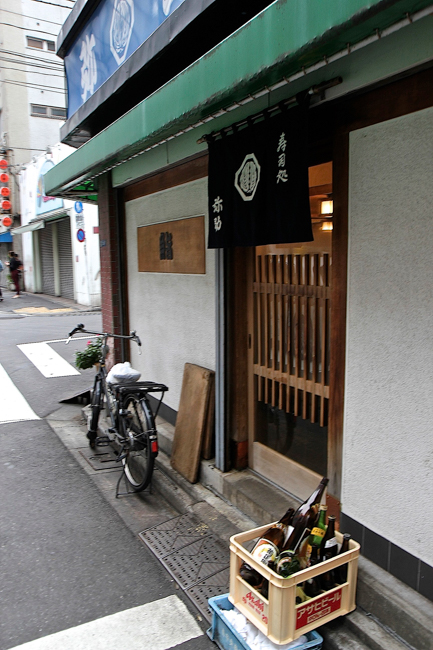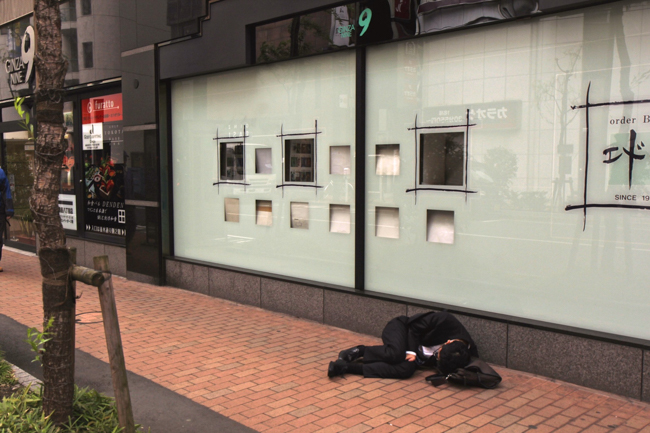American Romanticism & Sake

Over the last seven years of buying the spirits for K&L I've seen plenty of customers max out as it pertains to Scotch whisky. One minute a guy can't get enough new single malt, the next he's wondering what to do with all of it. I always find it funny when whisky companies confuse American sales with consumption. "You guys are sure drinking a lot of single malt over there in the States," they'll say. Drinking it? Maybe. Buying it? Certainly. There are limits to how much liquor we can consume as a populace, but we can sure as hell keep buying it. There's only so much we can buy before our other halves begin thinking we have a serious hoarding problem, but you have to admire our enthusiasm here in America. We love buying more booze. We're single-handedly keeping long-dormant industries afloat with our cagey cocktail curiosity. Rye whiskey? That industry was in the toilet until we all became obsessed with Mad Men. Scotch whisky? Scotch was for grandfathers and professors until America's new found love of single malt began the renaissance. Today the United States consumes.....excuse me.....purchases more single malt than any other nation in the world. Armagnac? The French sure as hell aren't drinking it. Mezcal? I spit out more mezcal in a week during tasting appointments than all of Mexico consumes. Here in America we're obsessed with the drinking cultures of foreign cultures, even if those cultures themselves are no longer interested. It's kind of like surfing in California; the transplants are far more passionate about it than the locals.
But that's how American drinking romanticism works. We look at the ideal in any genre and glorify that image in our minds until we can no longer keep our credit cards at bay. Whether we actually get around to enjoying that purchase is almost secondary. The idea of glamorous and exotic beverages being created and consumed elsewhere personally gets me all tingly. I can't control myself. I'm currently going through another Japanese sake phase; a long-standing idealistic hangover from the few days I spent in Tokyo a while back. To me, sake takes the best parts of wine, beer, and whisky appreciation and combines them all into one. You get the potential for food pairing and the joy of a meal accompaniment like you have with wine. You can geek out about the production methods and the impact of yeast and water like you can with whisky (and, like whisky, sake keeps far longer than your standard bottle of wine). The best part about it, however, is that—like beer—sake is brewed, so there are almost two thousand different breweries scattered all over Japan, creating regional styles that can be enjoyed seasonally. Sake can enhance your dinner, engage your mind, and there's enough of it to keep you occupied for years and years.

I drank a lot of sake when I was in Japan, as did this business man taking a nap outside his local sake bar. The Japanese drink a fair amount of the stuff, but sales are still on the decline nationally as the populace continues to be obsessed with American wine and whiskey. But don't think that the Japanese sake brewers have taken that news lying down. Over the last ten years or so, there has been a considerable movement among Japan's quality-driven sake producers to up the ante and create more graceful, complex liquids to help bolster a new quality-oriented renaissance. Much like the craft beer movement in the U.S. has changed the perception of how we view beer (no longer just a cold can to crush at the end of a long day), the push from industry leaders to improve the quality of sake as a whole, as well as expand to a new generation of curious drinkers has created a new hope for the genre. That curiosity has been spreading across the Pacific as well and, as you've probably assumed by this point after reading the first few paragraphs, guess who's helping to lead the charge? That's right! America! The U.S. is the number one export market for Japanese sake, bolstered by a fever pitch for all things Japanese right now: whisky, sushi, Pokemon—you name it. We're certifying new sake sommeliers in the Bay Area every day, and there are now American-born sake sales ambassadors making frequent calls at K&L.
However, the real challenge for sake, and in my opinion the key to its continued growth, lies in the consumption of sake with all types of cuisine, not just Japanese. We drink wine with just about anything these days—from Chinese food to hamburgers. We drink beer with Indian food, Thai food, and Mexcian food—there are no rules when it comes to cervesa. But sake? Most Americans only drink sake with sushi, or when they go out for izakaya. I worked at a Japanese restaurant all throughout college and the only time people drank sake in those days was when they dropped it into a cold mug of Sapporo for a Sake Bomb. With the current increase in sake quality, however, I've started to pair fine sake with cheese plates, salads, smoked meats, and standard Tuesday night television. Sake is still mysterious to a great many Americans and, like tequila, most older drinkers still associate it with a bad hangover from a frat party. But you'd be doing yourself and the beverage a disservice by letting previous associations dissuade you from giving sake another go.
The problem, of course, is the learning curve. How do you know what to buy? Where do you even start? What's good? What's bad? What doesn't taste like paint thinner? What's a ginjo versus a daiginjo? Don't worry! I'm going to help you with all that. Starting this week I'm going to do a few producer profiles covering some of my favorite Japanese sake breweries. I think we'll have some compelling stories to tell you with enough romanticism to get your American blood pumping and your bleeding heart racing.
Until then!
-David Driscoll
